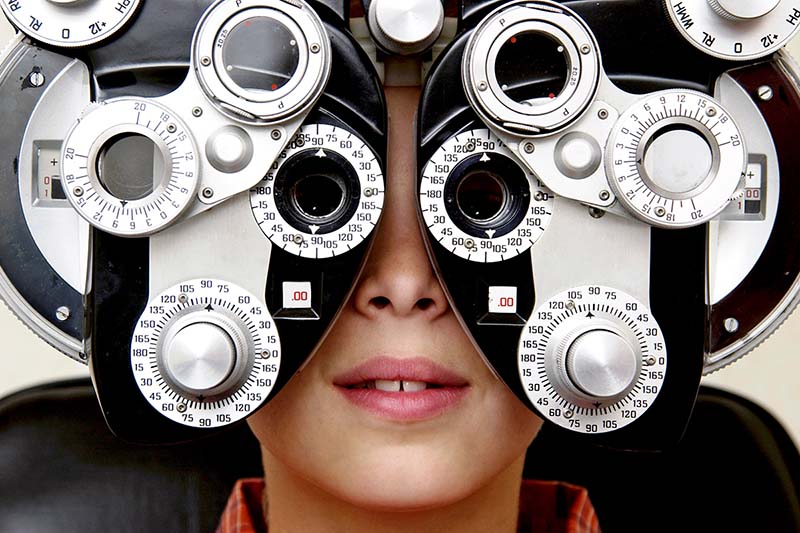See Clearer: What to Know About Vision Coverage
How do you keep your eyes healthy?

It’s no surprise that as you age, your vision may start to decline. You become more susceptible to eye diseases like macular degeneration, glaucoma, and cataracts. There are several things you can do now to maintain your eye health and prevent the onset of some of these more common diseases such as:
- Consume a healthy diet full of fruits and vegetables.
- Maintain a healthy weight.
- Wear sunglasses when exposed to the sun.
- Allow your eyes to rest every so often, especially if you spend time looking at screens.
Related: 7 Vital Ways to Keep Your Eyes Healthy
Another way you can ensure you stay on top of your eye health is by enrolling on a vision plan or ensuring your health plan offers vision coverage. Having vision coverage allows you to have frequent eye exams, which monitor the health of your eyes. From there, you and your eye doctor can take any needed action to either treat or slow the progression of eye diseases.
During an eye exam, your optometrist will dilate your eyes to inspect their interiors. Your eyes are numbed before the exam, so while it won’t hurt, it may be slightly uncomfortable. Your age—and whether you have eye issues—will determine how often you should have an exam done.
Below are basic recommendations on eye exam frequency based on age; however, it is encouraged that you talk to your eye doctor about your individualized needs. You may need to schedule an appointment more frequently if, for example, you have diabetes, a previous eye trauma, glaucoma, or a family history of glaucoma.
- 20 to 39 years of age: Every two to four years
- 40 to 64 years of age: Every two to four years
- 65 years of age and older: Every one to two years
Related: 15 Things That Will Surprise You About the Human Eye
Does my health plan include vision coverage?
Vision coverage can either be included as part of your health plan benefits package, especially if you are on an employer-sponsored plan, or it will need to be added separately as a stand-alone plan. To confirm, review your plan either online through your member portal, contact your Human Resources department, or call your insurer.
Under the Affordable Care Act (ACA), pediatric vision care is covered under your health plan as it is classified as an Essential Health Benefit (EHB). This means that your children, 19 years of age and under, are able to have routine eye exams, vision screenings, and glasses (or contacts) to improve their vision. Unfortunately, most health insurers do not offer coverage for adult vision care as part of the plan.
Medicare also does not offer coverage for routine eye exams. However, some Medicare Advantage Plans (Part C) include vision coverage as an added benefit, but this is dependent on the specific plan. There are some exceptions to this.
- If you are on a Medicare Part B plan and have diabetes, you will have coverage for eye exams related to diabetic retinopathy annually.
- If you are on a Medicare Part B plan and have a high risk of developing glaucoma, you are eligible for glaucoma tests every year. To be considered high risk, you must either have diabetes, a family history of glaucoma, be African American and 50 years of age or older, or be Hispanic and 65 years of age or older.
- If you are on a Medicare Part B plan and have age-related macular degeneration, you may have coverage for specific diagnostic exams and treatments.
No matter what health plan you’re on or insurer you have, it is wise to contact your insurer directly with any health-related coverage questions. Your eye health is just as important as your physical health. Start by routinely seeing your eye doctor and getting the exams you need to keep your vision clear.
If you are a Select Health member and have a question about eye exams and vision coverage, contact a member of the Member Advocates team at 800-538-5038 (or 855-442-3224 for Medicaid members).



